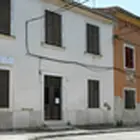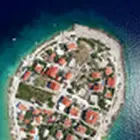The eleven-kilometer highway section bypassing the city of Focșani was inaugurated on November 7, exactly two years after construction began. This road section will also function as a ring road around the settlement. This small highway segment is part of the A7 project, which is designed to connect the center of the country, from Ploiești to the Ukrainian border, all the way to Siret. Although work is already underway on several sections of the A7, totaling about 300 kilometers (between Ploiești and Pașcani), construction has not yet begun on the section between Pașcani and Siret, which will ensure connection to the Ukrainian border. The road section between Pașcani and Suceava is currently in the tender phase, while on the 55-kilometer section between Suceava and Siret, feasibility studies are not yet complete. Similar difficulties are encountered in the southern part of the country, where the connection between Giurgiu (towards the Bulgarian border) and Bucharest should be realized to link with the A7. Given all this, drivers will have to wait for a fast road from the Ukrainian border to the Bulgarian border, and then further to Poland and Greece. The State of the A7 Highway Projects 16 kilometers of the A7 highway have been in use as part of the Bacău ring road since 2020. With the opening of the latest 11-kilometer road segment, also called the "hump of Focșani," a further 33 kilometers are expected to be opened around Buzău towards Râmnicu Sărat by November 17. Additionally, the 36-kilometer section between Focșani and Râmnicu-Sărat is also set to be completed by the end of the year, promises Transport Minister Sorin Grindeanu. He visited the construction sites with Prime Minister Marcel Ciolacu the day before the inauguration during the election campaign. In December, another nearly 50 kilometers of road will be opened on the A7 highway between Ploiești and Pietroasele. From the beginning of the year, drivers could travel about 130 kilometers in total if the promises are fulfilled. This would include the Focșani-Buzău and Ploiești-Pietroasele sections, complemented by the already operational Bacău ring road. Officials are optimistic that deadlines can be met, especially since many investments are expected to be completed by the end of the year. In the fall, there is always talk about how much can be opened to traffic as work accelerates to improve the balance of the previous year's performance.
The section between Focșani and Pașcani, along with section 3 between Buzău and Focșani, will be completed by 2026, marking the conclusion of the National Recovery and Resilience Plan. The A7 stretches from Ploiești to Pașcani: totaling 6.7 billion euros, with 1.9 billion provided by the resilience plan. Everything needed to complete construction within two years. Extensions Towards Ukraine and Bulgaria Our goal is to extend the highway to the Ukrainian border, Siret, stated Grindeanu on November 6. The minister's statement highlights a sensitive issue: the border extension of the A7 highway towards Ukraine (north) and Bulgaria (south). The Pașcani-Suceava-Siret section, originally planned as part of the A7, is falling behind schedule because the resilience plan does not finance this part, so there is no pressure to complete it by 2026. Similar delays are observed at the other end of the country, from Bucharest to Giurgiu, where plans for extending the A7 are located. The Romanian Transport Master Plan, operating between 2021 and 2030 and forming the basis for all major infrastructure projects, assigns strategic goals to transport corridors. The development document states that the A7 would continue with the Pașcani-Suceava (62 km) and the Suceava-Siret expressway (55 km), as part of the current plans. At the other end, near Ploiești, the A7 connects with the A3, which already provides a connection between Bucharest and Ploiești. From this capital, a fast road already leads towards Giurgiu. Thus, the second most important strategic corridor in Romania is formed between Giurgiu-Bucharest-Ploiești-Buzău-Focșani-Bacău-Pașcani-Suceava-Siret. "This ensures connectivity southwards with Bulgaria, via the Giurgiu crossing point, and northwards with Ukraine, via the Siret crossing point," confirms the master plan. The proposed roads are significant not only in light of the current geopolitical situation but also play a key role in economic development. "Moldova should not just be a transit route, but a place for the production of products and goods that can be exported on this corridor avoiding the Carpathians towards Ukraine, Moldova, and potentially Poland," says the deputy minister.
The transport master plan prioritizes the main transport routes of Pașcani-Suceava, Suceava-Siret, and Bucharest-Giurgiu. These are all parts of the Trans-European Transport Network, but currently mostly exist only in theory. Except for the Pașcani-Suceava section, which, although resulting from tenders, has not yet begun construction. Procurement Processes Continue One of the most advanced sections of the A7 highway is between Pașcani and Suceava (62 km). The first 33-kilometer section, between Pașcani and Roșcani, has already been completed. The builder for the section will be selected by the end of the year. The tender has started for the other section, connecting from the DN 29 junction to the Suceava airport (29 km). In contrast, the Suceava-Siret expressway is still in the process of concept examination. Contracting is dated to 2020, but implementation has been extended until 2025. "I believe that the concepts will be completed within 3-4 months, after which we can proceed with approval and procurement processes," said Scrioșteanu. In the case of the Bucharest - Giurgiu expressway, construction was delayed. This year, the procurement process for the concept began, with a submission deadline of December 9. The contract's total value is approximately 9 million euros and lasts for 18 months. Construction design and execution can only proceed after the completion of the concept. For the new transport route exceeding 50 kilometers in length, three route options are being examined. At the end of these routes, at the Bulgarian border, the possibility of linking with the new Giurgiu-Ruse bridge, the Prieteniei 2 bridge, which Romania has secured EU support for, is being examined. As for Bucharest's connection, determining the appropriate link point may cause difficulties. The first option is a route parallel to the Budapest-Giurgiu B5 highway connecting with the A0 ring road to Ploiești-A3 and then to the A7. The other two options connect the Giurgiu-Ruse border crossing with the Bucharest A1 highway, located west of the capital, overlapping another road with the București-Alexandria, still in the project phase. The new target of access to the A1 provides a better route for traffic, as drivers coming from Bulgaria pass more easily to Nadlac in the West. Starting from the A1 meeting point, the Moldova corridor traverses the A0 road, summarizing Bucharest's ring road and connecting to Ploiesti A3 then A7. Beyond all this, Scrioșteanu also talks about building a second highway zone around the capital, which will help expand connectivity. "We must have a medium and long-term perspective," he argues.









